In 2015, North Korean defector and artist Sun Mu (a pseudonym that means “No Borders”) painted Kim Jong-un against an azure sky. For the act of unsolicitedly depicting the supreme leader, he could have been killed, but since he paints from a studio in Seoul, he went even one step further, adding Disney’s Tinkerbell, Mickey Mouse, and Snow White, who appear to be tugging at Jim Jong-un’s magnificent red coat, causing the supreme leader visible discomfort. Sun Mu called the painting Take Your Clothes Off and Play.

Courtesy sunmuart.com
Angelenos can see Sun Mu’s defiant art through June 2 as part of his debut U.S. museum exhibition at the Wende Museum in Culver City. Before he headed back to Seoul, we spoke with him about his first brushes with artistic freedom and what’s behind all the joyful smiles.
How does it feel to have your work exhibited at a museum dedicated to the Cold War, which ended decades ago, with the notable exception of your former homeland?
It’s very meaningful for me to have an exhibit at a Cold War museum in Los Angeles. In North Korea, we had the same ideology as other countries who are featured in the museum, but the way we lived our lives was different. It’s really interesting and fun to have an exhibit here.
Nearly 30 years ago, did most North Koreans understand that the Cold War had ended?
I don’t believe that we knew. I didn’t know then that it had ended, and I only heard about it after I defected. And we didn’t use the term “Cold War” in North Korea; we called it the “Socialist Bloc.” Only after I defected, did I realize that many countries had surrendered to capitalism, though nothing in North Korea changed. Absolutely nothing.
The 2015 Netflix documentary I Am Sun Mu chronicled the weeks leading up to your much-hyped solo exhibition in Beijing, and ended with the exhibition being shut down before it even opened. What transpired after that incident?
My art was taken away by Chinese police, who were probably influenced by North Korean authorities, and they confiscated everything. We got some of the artwork back with the help of some local art students, and a few of those pieces are at the exhibit in L.A. And now, I can’t travel to China anymore. If I travel there, the authorities will arrest me. I also can’t hear about how my family’s doing in North Korea anymore. Overall, I can’t say that my life has gotten better since then.

People outside of North Korea picture suffering when imagining the country, yet most of your work is distinctly hopeful. Why do you paint more smiles than tears?
I think it’s a type of irony that I use, and that’s the fun part of being an artist. Even though the children in my paintings may be smiling, can’t you perhaps sense some sorrow behind their smiles?
Why was the [planned] 2015 solo exhibition in Beijing so meaningful for you?
When I escaped North Korea, I swam across the Tumen River at night to get to China, and I felt like I was living like a dog. I had no place in life there. But years later, when I was invited to show my work in Beijing and I could travel there legally, it was amazing. I felt like I had made it. It was really meaningful.
Part of the Beijing exhibit included a floor canvas on which your wrote the names of North Korean leaders in calligraphy. Why that artistic choice?
I predicted that staff from the North Korean embassy in Beijing would come to see what the exhibition was all about, but in order to even enter the room, they would have had to walk on the the names of the leaders (Kim Il-sung, Kim Jong-il, and Kim Jong-un) and I knew they would never do that. So that itself would have been a pretty interesting picture, and it shows how sad the situation is, and how brainwashed the people are over there. I just thought it would be so interesting to see what the North Koreans would do when they had to enter the room.
Any idea where those canvases are now?
I think they’re still somewhere in Beijing. Those were definitely not sent back to me.
Who emerged more emboldened that day in 2015 when your exhibition was shut down: the North Koreans or Sun Mu?
I don’t know if I could say that one side won or lost, but I know that the world now knows that there’s an artist who’s striving to express certain thoughts about North Korea.

Dany Naierman/Wende Museum of the Cold War
After you defected, how did it feel to draw whatever you wanted?
When I came to South Korea, I got to meet other artists, and gained a lot of confidence. Maybe I should have drawn myself, but the first person I drew was Kim Jong-un, and I was so afraid that I was shaking when I was drawing him. Maybe this is hard for people to understand, but that’s all I knew when I was living in North Korea; Kim Jong-un and Kim Il-sung were everything to me.
If you could paint your own face for an exhibition, what sentiment would it convey?
I actually have multiple self-portraits; I even drew myself on the opening of the Beijing exhibit. I have many different ideas. Maybe one day, I’ll draw myself with an overlap with the supreme leader of North Korea, just to remember a time when he was me and I was him.
Do your daughters, ages 9 and 11, respectively, have a sense of the political undertones beneath your art?
I think it might be too tough for them to understand, so I want to wait a few more years to explain to them what I do.
If the North Korean regime ends, will you run out of artistic inspiration?
Of course, it will be difficult, but I think I’ll still continue to tell stories of people in North Korea, and also in other places, like the U.S, China, and Japan. For me, North Korea is a global issue. It concerns everyone.
You defected from North Korea, are now banned from entering China, cannot show your face at your own exhibitions, and haven’t seen your mother and father in over 20 years. What drives you at this point?
This is just what I do, and I cannot avoid or ignore my family and friends’ plights in North Korea. I want to be able to help them live a better life through what I do.
For Sun Mu, where is home?
My home will always be North Korea. I miss it the most.
Upside-Down Propaganda: The Art of North Korean Defector Sun Mu is on display through June 2 at the Wende Museum, 10808 Culver Blvd., Culver City.

